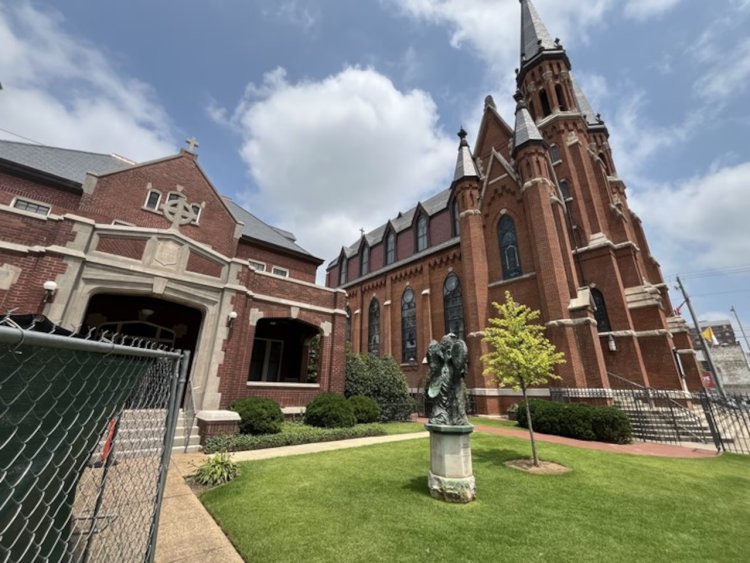The 1921 Cathedral Tragedy: Honoring the Legacy of a Birmingham Priest
Explore the legacy of Rev. James E. Coyle, a Birmingham priest tragically murdered in 1921, and how his memory continues to be honored today.

Kathleen Grimm of Yulee, Florida, holds onto a poignant memory from her childhood—her father, occasionally pulling out a picture of a priest who met a tragic end in 1921 Alabama. That priest was the Rev. James E. Coyle, a figure whose dedication to his faith still resonates within her family. "You stand strong for what you believe in, no matter what," Grimm said, emphasizing the importance of unwavering conviction.
Grimm, a first cousin twice removed of Rev. Coyle, attended a special event on Thursday at the Cathedral of St. Paul in Birmingham. The cathedral held its annual memorial Mass in honor of Coyle, who was murdered 103 years ago near the very doors of the church he served for 17 years. The solemn service was broadcast internationally by EWTN, the Catholic network headquartered in Irondale, Alabama.
On August 11, 1921, Rev. Coyle was shot on the porch of the wooden rectory next to the cathedral. In his memory, the congregation later funded the construction of a new brick rectory on the same site, a testament to his lasting impact. "The current rectory was built in honor of Father Coyle after he died," said the Rev. Bryan Jerabek, the current pastor of St. Paul’s Cathedral. "It’s a significant part of our history, and we’re committed to preserving it."
Over the past year, the cathedral has been working on restoring the 102-year-old rectory, which had suffered from structural issues and a leaking roof. "We want to ensure its preservation because it represents an essential chapter in our history here in downtown Birmingham," Jerabek explained. "It’s also the last free-standing occupied residence in the business district, and we continue to live here."
The murder of Rev. Coyle remains one of Birmingham's most infamous events, partly due to the involvement of future U.S. Supreme Court Justice Hugo Black. At the time, Black defended the accused, Rev. Edwin R. Stephenson, a Methodist minister and member of the Ku Klux Klan. The trial was marred by the fact that the Klan funded Stephenson's defense, and the jury, which included several Klan members, acquitted him.
Stephenson’s rage was sparked when Coyle officiated the marriage of his daughter, Ruth, to a Puerto Rican man, Pedro Gussman. During the trial, Black sought to highlight Gussman's ethnicity, even dimming the courtroom lights to emphasize the color of his skin. Although Black later renounced his Klan ties and became a liberal force on the Supreme Court, the case remains a stark reminder of the racial and religious tensions of the era.
Jim Pinto, author of Killed in the Line of Duty, documented the events surrounding Coyle's death. He noted that Coyle had received numerous death threats from the Klan due to his outspoken defense of immigrants and the Catholic faith. Despite the dangers, Coyle continued his routine, sitting on his porch with his prayer book the night of the wedding—ultimately paying the price for his beliefs.
Coyle’s death left a deep scar. Stephenson never reconciled with his daughter, Ruth. Tragically, Pedro Gussman, Ruth’s husband, was killed in a hit-and-run accident on Valentine’s Day in 1934, just steps away from where Coyle was murdered.
The anti-Catholic sentiment that fueled this tragedy was widespread in America at the time. In 1919, the Alabama Legislature passed the Convent Inspection Law, allowing officials to search convents without a warrant to ensure no one was being "involuntarily confined"—a law born out of unfounded fears that Protestant girls were being forced into Catholicism.
Ruth’s conversion to Catholicism at the age of 18, against her father's wishes, only heightened these tensions. Rev. Coyle’s debates with those who propagated Klan rhetoric made him a target, and federal officials warned his bishop of the threats against him. Despite the wooden house where Coyle was shot being replaced, the brick rectory that stands today still bears the same planters, a silent witness to the events of that fateful day.
Plans are underway to place a historical marker at the site where Coyle was killed—a fitting tribute to a man who stood firm in his beliefs, leaving an indelible mark on the history of Birmingham.







